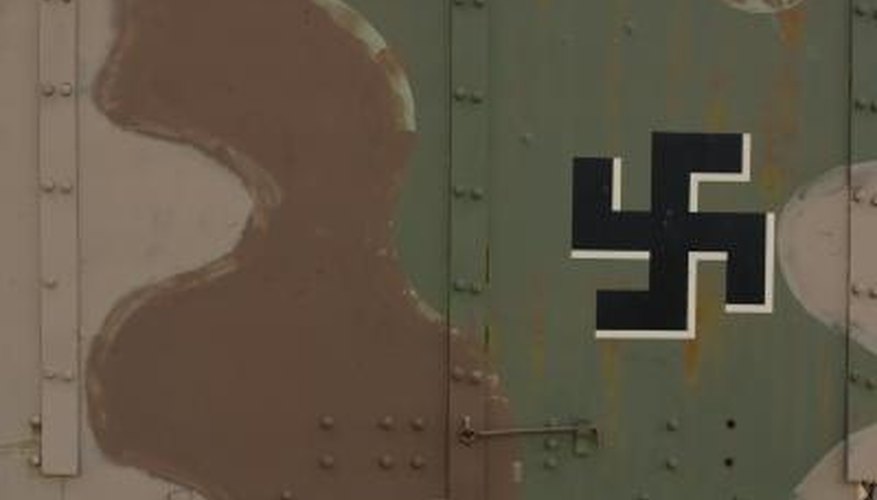The German military helmet, or "Stahlhelm," is a vigorously collected item. It is perhaps one of the most iconic symbols of World War II and online collectors and sellers are plenty. Collectors of the Stahlhelm are generally history buffs as well. The German helmet, like all other military uniforms, has evolved over time and you can see this evolution in the changing model that was worn during this notorious time in history. This helmet was the basis for Darth Vader's helmet, the tragic villain in the "Star Wars" films. It is possible to tell the age of the helmet by its appearance, which changed during its history.
- The German military helmet, or "Stahlhelm," is a vigorously collected item.
- The German helmet, like all other military uniforms, has evolved over time and you can see this evolution in the changing model that was worn during this notorious time in history.
Consider the shape of the helmet. The Stahlhelm used between 1939 and 1945 are flanged along the rim and arched over the area covering the ears. This helmet changed from the earlier version used during World War I. The M1940 was a modification from the M1935 to simplify it by merely punching holes to act as vents rather than having a vent cap over the holes. Check with a museum or retailer.
Check for German or Nazi insignia that will mark most of the M1942 helmet models. They were the result of wartime restructuring to the manufacturing process. You can tell the difference form police helmets worn away from combat fields by the dual insignia of the police eagle on the left and the National Socialist Party on the right. This helmet was made from 1935 to 1945 and is painted with grey or grey-green.
- Check for German or Nazi insignia that will mark most of the M1942 helmet models.
- You can tell the difference form police helmets worn away from combat fields by the dual insignia of the police eagle on the left and the National Socialist Party on the right.
Check other aspects of the helmet. The Fallschirmjäger version of the helmet was made to better protect paratroopers. There is a more substantive chinstrap than in earlier models. The Fallschirmjäger is a variation on the M1935 design. Look for one sheet of metal that removed the unneeded projections. Early models can be identified by the lines from the remanufacturing from earlier M1935 helmets.
Determine if the helmet has less of a flange around the edge. This was done to speed up the manufacturing process for the M1942. The edge along the rim flares out a bit but not as much as earlier models. This was done to speed up the manufacturing process and used less metal. Insignias were not put on these helmets to help reduce combat visibility.
- Determine if the helmet has less of a flange around the edge.
- This was done to speed up the manufacturing process for the M1942.
Compare the helmets to photos of other helmets. The Felduniform 44 model was designed in 1944. Look for one piece of metal with sloped sides. It was similar to a British helmet.
Check to see if there are no ventilation holes in the helmet. The M1945 German helmet was a rare model that was manufactured only during the last few months of World War II. Collectors and historians argue about the existence of the M1945. Some say that it is only an M1942 made in a factory experiencing a malfunction, eliminating the vent hole. Regardless, you have a rare helmet if this is the case.
TIP
Contact museums and memorabilia retailers to address your questions about a specific piece of WWII history. A number of helmets have manufacturing stamps that can assist in identifying a helmet to its origin. The Felduniform 44 helmet was allegedly personally rejected by Hitler as being too foreign.
